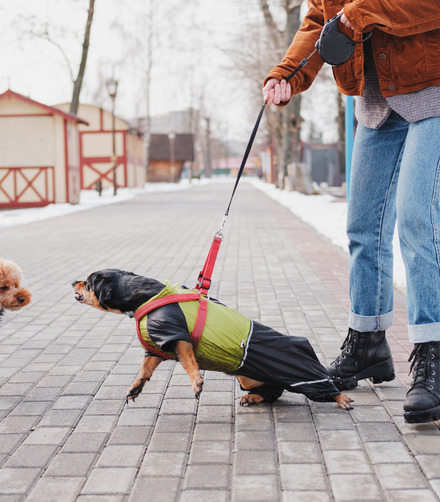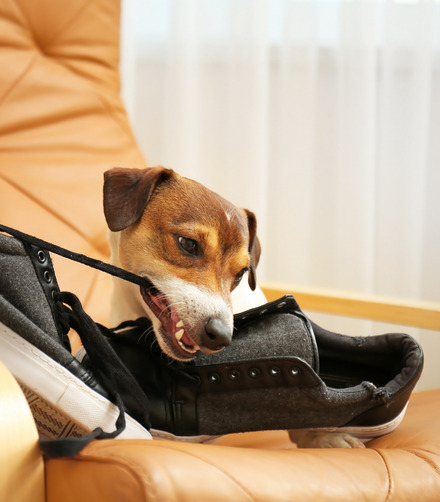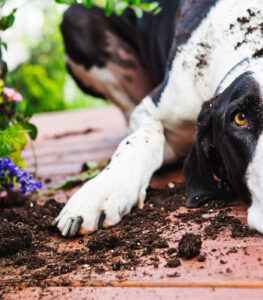Pexels.com
5 common dog behavior problems and solutions will help you raise a pup or deal with your adult dog!
Dogs exhibit a range of interesting behavior. Sometimes, it’s fun to watch them do their things. But there are times when their behavior can become concerning. For example, when they growl excessively at a guest we’ve just invited over. It’s kind of embarrassing. No?
Well, in this post, we’re going to address just that. We’ll look into the five most common dog behavior problems, as well as some effective solutions for each. Let’s dive in!

Excessive Barking
1. Excessive Barking
A healthy and well-tamed dog barks approximately 40 – 100 times a day. And they bark at 80 – 100 dB. Obviously, you’re not measuring the sound with appropriate tools. So, imagine the impact of this sound to be louder than humans shouting (yep, living with a dog means a noisy environment – unless you opt for a quieter breed).
The question here is: how do you identify excessive barking in your dog? Or how much barking is too much?
Well, the simplest answer to the question would be: if you’ve been living with your dog for a few months or years, you’d be familiar with its barking pattern. So, if the dog exceeds its usual duration, frequency, or volume of barking, you can count it as excessive barking.
However, if you’ve just adopted your pup, we recommend looking for the following signs (along with barking):
- Pacing
- Panting
- Trembling
- Dilated pupils
- Lowered ears
- Tucked tail
These physical signs indicate that your dog is barking abnormally and excessively. Hence, you ought to address the situation immediately.
Solution
Before you head to any solution, take your dog to the vet and ensure that the dog is medically fit. If your dog’s checkup goes all positive and successful, look for triggers in your dog’s surroundings. Pay attention to the situations, people, and things that trigger the excessive barking and try eliminating them to minimize the barking.
At times, dogs also bark excessively when they are bored or frustrated. If you don’t notice any trigger in the environment, boredom is probably the case. Engage your dog in mentally stimulating activities as well as outdoor physical activities. Lastly, train your dog to listen to ‘quiet’ and ‘sit down’ commands.

Aggression
2. Aggression
Some breeds are naturally aggressive, such as Bull Terrier, Siberian Husky, and Bullmastiff. They may exhibit aggressive behavior like snarling, growling, showing teeth, lunging, and biting at the slightest of threats in their environment. It’s important to train these dogs properly and keep them away from children, elderly, and vulnerable individuals.
However, some dogs may exhibit signs of aggression due to some external or underlying issue. Identify this issue by studying your dog’s behavior. Usually, dogs develop and exhibit aggression when:
- They are guarding territory, and a foreign object or subject enters their territory.
- They are possessive of their personal belongings like toys, and some other dog tries to take them.
- They feel threatened or sense danger.
Solution
Aggression is a serious problem and it’s essential to seek an immediate solution. Consult a vet, and they’ll recommend some soothing practices and medication. Alternatively, you can add 2-3 drops of CBD oil from CBD Oil Ireland to your dog’s food occasionally. It helps calm their nerves and tackles aggression effectively. If you notice that your dog gets aggressive too frequently, we recommend adding CBD oil to its diet at least 2-3 times per week.
Plus, take your dog out and engage them in physical activity. Make this a routine. Interaction with other dogs will minimize aggression spells.

Chewing
3. Chewing
Chewing is a perfectly normal activity for dogs. Both wild and domestic dogs spend hours chewing bones to keep their jaws strong.
However, chewing becomes destructive when you see damage to your furniture or complete destruction of its toys. You might also notice your dog’s gums become red or have injuries in its mouth. Destructive chewing may also lead to the ingestion of inedible items by the dog.
If you’re wondering about the reason for excessive chewing, it’s usually because of boredom, excess energy, teething stage, anxiety, or even curiosity.
Solution
This dog behavior problem is pretty easy to solve. Provide your dog with appropriate chewing toys. And if you notice it chewing on the wrong thing, distract it for a minute or two and replace it with a chewing toy. If the dog has already damaged itself in some way due to destructive chewing, take it to the vet!

Digging
4. Digging
Most dogs have an instinctual habit of digging, particularly hunting dogs. However, if you notice your dog doing any of the following, then know that your dog is exhibiting signs of destructive digging:
- Digging in inappropriate places like flower beds, potted plants, or lawn.
- Digging extensive and deep holes (i.e., big enough to bury their toys)
- Long sessions of digging
- Immediate digging after being scolded
- Less responsive to distractions during their digging sessions
- Constantly having dirt on their fur
Solution
Provide a dedicated digging area for your dog, like a sandbox. Train your dog to dig into it only. It’s also a good idea to increase the share of physical activities in your dog’s routine. It occupies them and keeps them a safe distance away from destructive behavior. Plus, try placing deterrents on their usual digging spots, like rocks, chicken wire, or citrus scents.

Chasing Other Dogs
5. Chasing Other Dogs
If dogs are playing, it’ll be visible. But if your dog is chasing another dog owing to its predatory instincts, there’s no way you could ignore it. You’d see your dog chasing the other while snarling, lunging, and snapping. The dog being chased will clearly exhibit signs of stress and fear.
If you don’t address this issue timely, your dog’s aggression may build, and it may even hurt the other dog. And if the fights get violent, either of the two dogs may lose their life.
Solution
Since this is a very serious dog behavior issue, we highly recommend consulting a vet. In case, it turns out to be a result of poor training, redo your training drills with your dog and spend more time with it. At times, dogs develop aggressive chasing behaviors owing to the lack of attention and love. Also, make sure you take your dog out with a leash.
Final Words
We hope this post helped you identify behavioral problems in your dog and bridged the gap between you and effective solutions. Feel free to share how things turn out once you implement the solutions given above!









